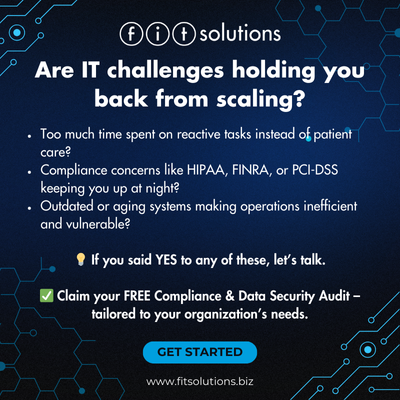By Rick Banas
Please note that this article was originally posted on Gardant’s website. Senior Living Foresight is sharing this article with their permission.
I will preface my comments about an opinion piece that was posted in the New York Times on Aug. 29 by telling you a story. The story is not a made up piece of fiction designed to illustrate a point. The events occurred as told below.
The 91-year-old woman was lucky. Late one December afternoon, she went down to the basement to get something she felt she needed. She had done so many times before without a problem. On this occasion, however, she fell, breaking her hip and a wrist. She was not able to alert anyone to her situation because she was alone in the house, and she had left her emergency alert device in a basket in the kitchen. She did not take the device with her because she was afraid that she might inadvertently set it off and would not be able to get back upstairs in time to notify the company that there was no emergency. The paramedics already shocked her once by showing up when she unknowingly activated the system. She did not want it happening a second time.
I say she was lucky because she shared the house with one of her sons who came home from work to find her lying on the basement floor less than an hour after she had fallen. What if she had lived alone? How long might it have been before someone found her? What if she had decided to venture outside rather than down to the basement and had taken a tumble in the backyard on that cold winter day in Chicago?
The fall had a sudden and significant impact on her and her family. For her, she had to cope with the sudden loss of independence. From the standpoint of her family, she insisted on returning home as soon as she completed the regimen of short-term rehabilitation in the nursing home. She was not staying in a nursing home one minute longer than required. She understood that she could not function on her own. She could not be left alone. She needed assistance. It was the family’s responsibility to figure it out.
The approach the family took was to have home health with her on Mondays, Wednesdays and Fridays and a daughter-in-law who was retired on Tuesdays and Thursdays. Together, they covered the hours her son was at work. The plan worked well until the daughter-in-law was involved in a car accident and no longer available.
Their challenge was the ability to afford the cost of additional home health care. The price tag of having a home health aide at the house from 7 a.m. to 5 p.m. five days a week would be nearly $5,000 a month.
The headline on the opinion piece reads “How Not to Grow Older in America.” The piece was written by Geeta Anand, a former New York Times reporter who is a professor in the Graduate School of Journalism at the University of California at Berkeley.
In terms of social policy, I agree with Anand that it would be helpful to look at places like Japan that have adopted a national long-term care insurance system. Research indicates that the vast majority of individuals in the United States are ill-prepared financially for retirement, which will have a significant impact on their ability to afford long-term care.
Here are the areas where I have concerns:
Anand contends that the idea that we all can be independent and self-sufficient until we die is pure fantasy. After all, she says, “we don’t demand our toddlers be self-reliant.” We need to accept the reality that we will become dependent as we age.
The opinion piece cites comments from a former health care nurse who lectures on gerontology at San Francisco State University. The nurse questions the emphasis on allowing older adults to be independent, contending that we should not allow people to do unsafe things.
I agree from my years of experience in senior living that, all too often, older adults are in denial that they need help and too many refuse to get the assistance they need.
Research, however, indicates that frailty is not a natural consequence of aging. Dan Buettner, in his book The Blue Zones, writes about discovering places in the world where people enjoy a long and healthy lifestyle until they die of natural causes.
And how do we ensure safety? How do we prohibit people from doing unsafe things? The 91-year-old woman mentioned above had no history of falling before taking a tumble and breaking a hip and a wrist.
Do we start limiting independence and personal choice at a certain age? We have individuals who move into an affordable assisted living community we operate on their 65th birthday because they now qualify for a Medicaid waiver and need the personal assistance, help with medications, and support services the community offers. I also have met residents who have lived on their own into their late 90s or early 100s. One individual won an award from the town gardening club when she was 99. Another took up wood carving at 92 while living alone in a condominium. At 96, he spent 3½ months at the local senior center, creating an eight-foot high wood carving of the Gettysburg Address that has been on display at the Lincoln Museum in Springfield, Illinois.
Do we force older adults to eat only what they should when they should; take medications as prescribed; follow doctors’ orders; quit smoking; and engage in daily physical and mental exercise? If so, how?
Anand also contends that while assisted living and nursing homes have a place, the emphasis needs to be on caring for older adults in their homes.
At the same time, she mentions that when she had rented an apartment large enough to accommodate her, her husband, their children, and her parents that her parents seemed lonely and bored.
She admits that assisted living can be a great option for some older adults but says her biggest concern is the emphasis on independence at the expense of safety. As already mentionedl, she says, “we don’t demand our toddlers to be self-reliant.” Yet, toddlers fall all the time. In fact, one of our grandchildren knocked out his two front teeth before he celebrated his second birthday. He fell while playing in a park under the watchful eyes of his mother.”
Older adults can fall when living alone at home or with a caregiver or family member present. They can fall in an assisted living community. Unless they are under lock and key, they can wander outside and get lost. Their confusion may be due to Alzheimer’s disease or related dementia. It may be due to a new medication or to a urinary tract infection.
One of my gripes is that all assisted living is painted with one big brush. The reality is, however, as you look across the United States, you will find a variety of different models and styles of assisted living in operation.
Another point of contention is the opinion piece lacks analysis of where an older adult who needs some help and assistance might be better off — at home or in assisted living. Guaranteed safety is an impossibility.
The assisted living communities that Gardant operates can be a wonderful alternative to living at home. Residents can live in a private apartment that is designed for their needs. There are no stairs they have to climb to get in and out of the building or to and from the upstairs bedroom or the washer and dryer in the basement. Each apartment has a private bathroom that is spacious enough to accommodate a walker, scooter, or wheelchair. The bathroom features a shower and grab bars. An emergency alert system is included.
Staff is on-duty 24 hours a day, seven days a week to provide residents with the scheduled and unscheduled help and assistance they need. Staff can help with bathing, dressing, toileting, and ambulation. They can help ensure that residents are taking the right medications at the right time of day. Support services include three meals a day plus snacks, housekeeping, and laundry.
In addition, residents benefit from all of the opportunities that are available to socialize with family, friends, and neighbors and to participate in social, recreational, educational, and wellness activities. Scheduled transportation is available for doctors’ appointments and shopping.
Staff can help residents be proactive about their health. They can remind residents about upcoming appointments with their health care providers and help ensure that residents are following doctors’ orders. If they see that a resident is suddenly confused or is having more difficulty with their balance, staff can help the resident be proactive.
I agree that assisted living is not the “be all” answer to every situation. There are older adults who need more help than an assisted living can provide. What creates a dilemma is that by no means are all older adults or family members understanding of the limitations. They want to avoid having to move to a nursing home at all costs. The perception of nursing homes as noted in Anund’s opinion, is “Yuk”, much of which is the result of nursing homes being among the most regulated industries in the country.
The residents and families, as well as some social policy wonks and state regulators, argue that an individual has the right to move into and remain in an assisted living community even when their needs exceed what the community can provide. They contend an individual has the right to live in an environment where they are a danger to themselves. It a personal choice that applies to an apartment in an assisted living community just as it does if they were living on their own in a house, apartment, townhome, or condominium. At the same time, their contention is that the assisted living community should be deemed to be at fault if something should happen to the resident. As a result, assisted living communities are stuck in the middle.
In my opinion, what we really need is a discussion on how best to balance independence, personal choice, and dignity with safety and security.







